Title : Tubercular disease in children: Optimizing treatment strategies through disease insights
Abstract:
Background: Paediatric tuberculosis (TB) represents a critical health concern due to the significant risk of extrapulmonary TB (EPTB), severe disease forms, and the increasing prevalence of drug-resistant strains (DR-TB). Understanding the clinical characteristics of affected children and evaluating the role of second-line drugs is essential for optimizing management strategies.
Methods: A retrospective study was conducted on 271 children diagnosed with active TB at Meyer Children's Hospital, Florence, Italy, from 2006 to 2022. Among these, 44 cases involved EPTB and 9 cases were DR-TB. Clinical data, drug susceptibility testing (DST) results, and treatment outcomes were analyzed. Univariate and multivariate logistic regression were employed to identify risk factors associated with EPTB, DR-TB, and the use of second-line drugs.
Results: Drug susceptibility testing results were initially challenging to obtain, with an increase in availability from 11.04% in 2006–2013 to 42.73% in 2014–2022 (p < 0.001). Second-line drugs were administered in all DR-TB cases and in 45.45% of EPTB cases, often reflecting therapeutic complexity. Adverse events related to second-line therapies were infrequent (4.8%) and generally mild. The overall treatment success rate was 98.52%, with only 1.48% of children presenting sequelae. Asian origin emerged as a significant risk factor for both EPTB (p = 0.013) and DR-TB (p = 0.045). The introduction of GeneXpert technology significantly improved diagnostic accuracy and DST result availability.
Conclusions: While second-line drugs are primarily recommended for DR-TB, selected EPTB cases may also benefit from these therapies. The integration of advanced diagnostic tools, such as GeneXpert, enhances disease management and facilitates tailored treatment approaches. Further studies are needed to refine therapeutic protocols and improve outcomes for paediatric TB.



